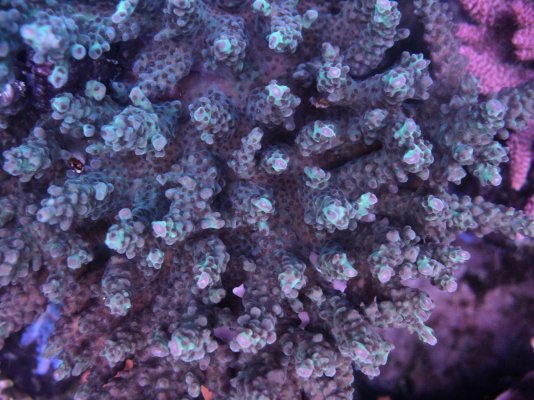Freshly taken Acropora pictures. Pigments are a little darker than I would like due to high PO4. Other than that I am happy.
Today's test result (apart from NO3):
KH - 6.7 dKH (Salifert)
Ca - 415 ppm (Salifert)
Mg - 1380 ppm (Salifert)
K - 390 ppm (Salifert)
PO4 - < 0.18 mg/L (Elos High Resolution)
NO3 - 5 ppm (Salifert) (6 April 2021)
Daily dosing (for 250L net volume):
Bacto-Balance (2.4 ml)
A- Elements (2.5 ml)
I am not currently using any PO4 adsorber even though PO4 is much higher than I would like.










Today's test result (apart from NO3):
KH - 6.7 dKH (Salifert)
Ca - 415 ppm (Salifert)
Mg - 1380 ppm (Salifert)
K - 390 ppm (Salifert)
PO4 - < 0.18 mg/L (Elos High Resolution)
NO3 - 5 ppm (Salifert) (6 April 2021)
Daily dosing (for 250L net volume):
Bacto-Balance (2.4 ml)
A- Elements (2.5 ml)
I am not currently using any PO4 adsorber even though PO4 is much higher than I would like.

















